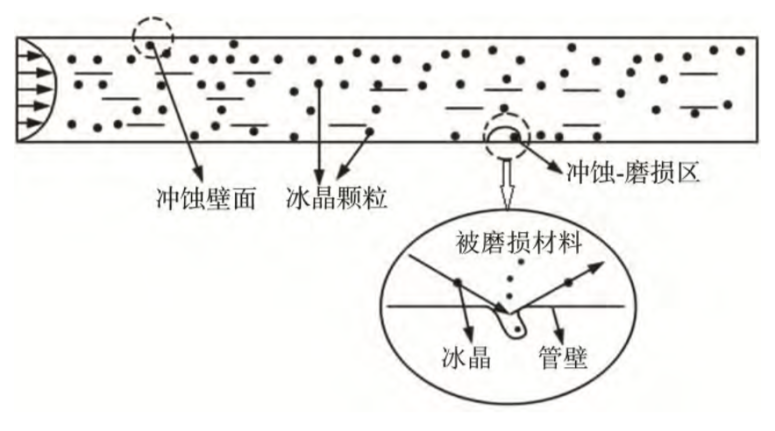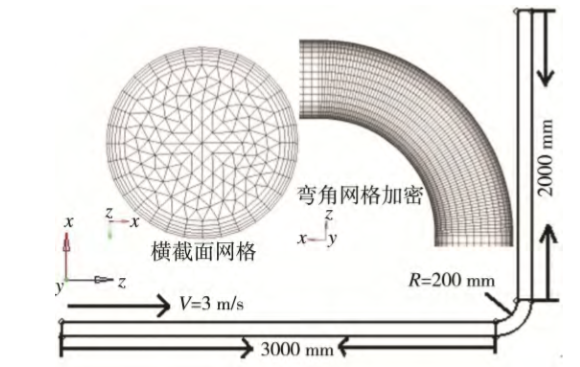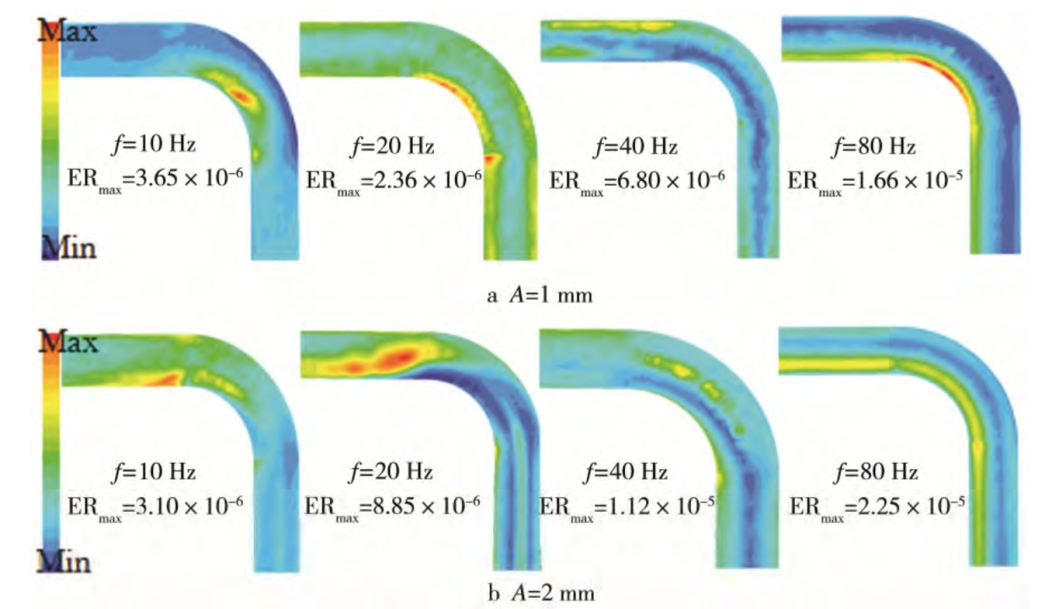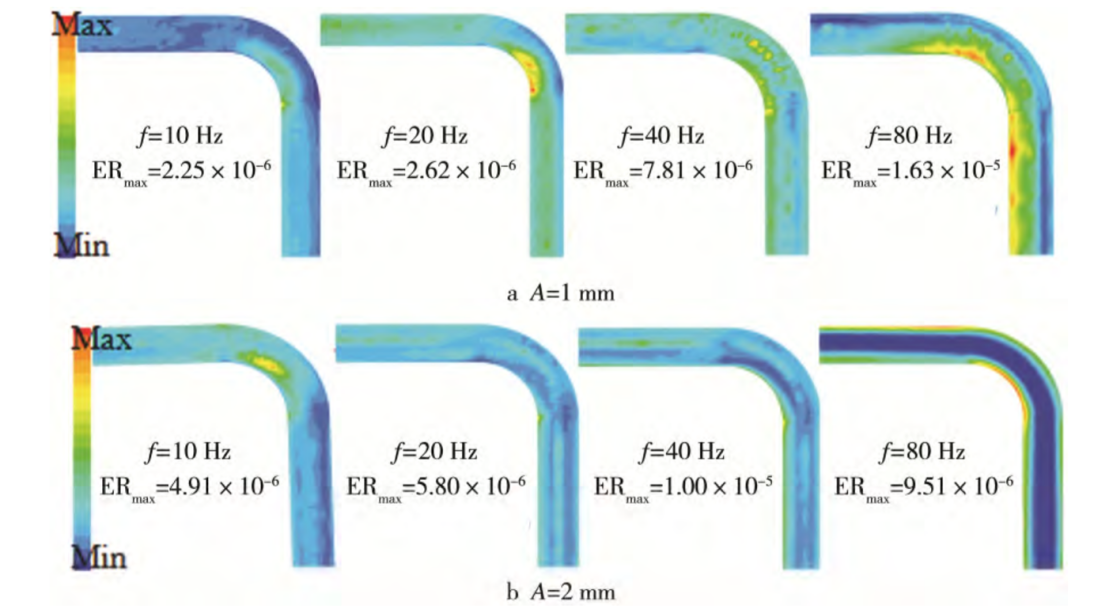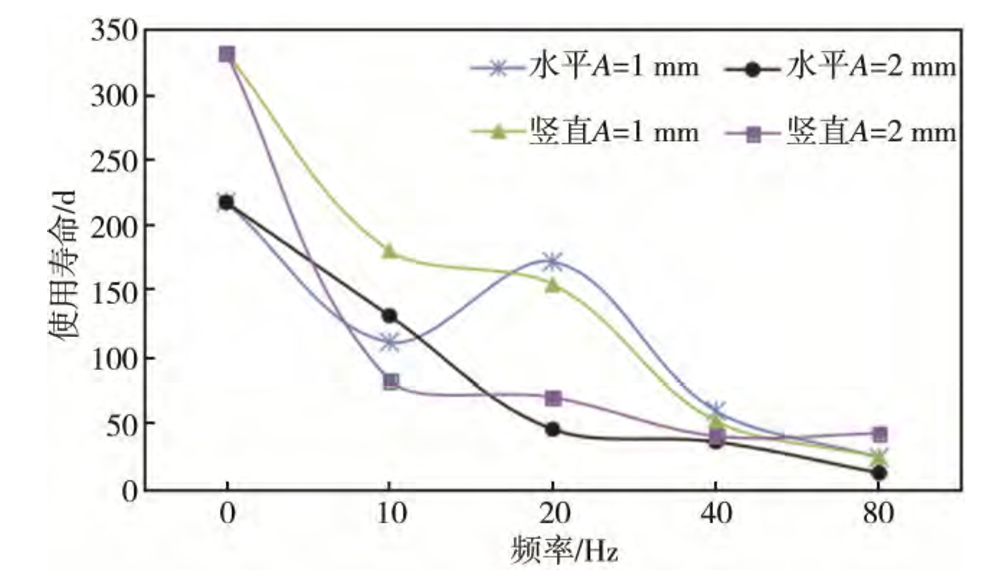北极运输船舶冷却系统中的腐蚀磨损防护分析毕业论文
2020-03-14 12:17:00
摘 要
近年来,随着世界资源的稀缺,各国纷纷将注意力转向了富含石油,矿物和渔业资源的极地地区。北极航线一经开通,将有助于中国减少对传统航线的依赖,降低航运安全风险,降低运输成本,确保能源运输安全。这对我国的经济发展而言具备重要的战略意义。北极资源的有效利用将成为我国重要的战略方向。在这种长期利益背后,极地破冰船技术的发展是极地探险,极地资源开发和极地运输的核心要素。世界各地对北极资源的重视,导致了破冰船的重要性逐渐提高。随着破冰船方面的研究增多,在极地环境中,船舶冷却系统的腐蚀与磨损问题已成为研究的焦点。海水腐蚀会严重损害海水冷却系统的正常工作,比如由于海水腐蚀造成的管道和冷却器堵塞,致使冷却水供应出现异常或者使其效率下降,严重堵塞时还可能会造成强制停机。海水冷却系统的侵蚀将会致使大量的人力物力的虚耗。由于海水冷却系统中的海水是时刻处于循环流动状态的,但是如果在某些情况下没冷却水流量变少,甚至停滞,导致物质沉淀最终形成了粒子。除了微生物的健康,新陈代谢和尸体的分解之外,在管道底部很容易形成污泥,从而为厌氧微生物的繁殖提供避难所,大大增加了管道腐蚀的风险。
通过叙述国内外对于这一领域的研究现状,说明海水冷却系统的定义及其研究的必要性,介绍了在冷却系统中遇到的关于腐蚀及磨损的相关问题,提出相应的应对措施,以达到减少磨损腐蚀,增加冷却系统使用寿命的目的。列出了冷却系统管路腐蚀和腐蚀的流体力学类型和影响。振动条件下海水管道下冰晶冲蚀磨损的规律进行研究,借助计算流体力学软件FLUENT对北极运输船冷却系统进行了三维数值模拟。通过使用紊流模型、水平直管90冲蚀模型以及离散相模型,寻求解决海水管道海冰的充实磨损问题的方法。利用弯头对不同流速、颗粒质量流量、粒径和冲蚀角的管道磨损特性进行了数值模拟。为保证极地船舶安全航行,提出了极地船舶海水管路系统的优化措施。按照已知研究结果得出以下结论:
我国关于极地环境下冷却系统的相关研究尚不成熟,导致冷却系统管道磨损腐蚀的因素及其诱因十分复杂。
振动对水平布置弯头的磨损有很大影响。水平布置的弯头具有严重磨损的位置,其随着振动条件的变化而不断变化,而垂直弯头磨损集中在弯道内部。在设计和建造海水管道时,可以在拐角处修改表面耐磨性,并可以安装管道阻尼装置,以延长海水管道的使用寿命。因为冰粒流量的增添、质量增长,也致使了管道磨损量的增添。颗粒直径增加会使直管磨损量增多,弯管磨损减小。为了延长管道寿命,应加强管道弯管部分的壁厚。
关键词:海水冷却系统 腐蚀类型 磨损类型 海水系统管道
Abstract
In recent years, with the scarcity of resources in the world, countries have turned their attention to the polar regions rich in petroleum, minerals and fishery resources. The opening of the Arctic route will help China reduce its dependence on traditional routes, reduce shipping security risks, reduce transportation costs, and ensure energy transportation security. This has important strategic significance for the economic development of our country. The effective use of Arctic resources will become an important strategic direction for China. Behind this long-term interest, the development of polar icebreaker technology is a core element of polar exploration, polar resource development and polar transportation. The importance attached to the Arctic resources around the world has led to an increase in the importance of icebreakers. With the increase in icebreaker research, the corrosion and wear of ship cooling systems have become the focus of research in the polar environment. Seawater corrosion can seriously impair the normal operation of the seawater cooling system, such as blockage of pipes and coolers due to seawater corrosion, resulting in abnormalities in the cooling water supply or in the reduction of its efficiency, and it may also result in forced shutdown if it is severely blocked. The erosion of the seawater cooling system will cause a lot of manpower and material resources. Since the seawater in the seawater cooling system is always in a state of circulating flow, if there is no cooling water flow in some cases or even stagnant, the precipitated matter eventually forms particles. In addition to the health of microorganisms, metabolism, and the decomposition of dead bodies, sludge is easily formed at the bottom of the pipeline, providing refuge for the propagation of anaerobic microorganisms and greatly increasing the risk of pipeline corrosion.
By describing the current research status in this field at home and abroad, the definition of the seawater cooling system and the necessity of its research are explained. The related problems encountered in the cooling system regarding corrosion and wear are introduced, and corresponding countermeasures are proposed to achieve Reduce wear and corrosion and increase the service life of the cooling system. Lists the fluid mechanics types and effects of corrosion and corrosion in cooling system piping. The law of ice crystal erosion wear under seawater pipeline under vibration conditions was studied. The three-dimensional numerical simulation of Arctic transport ship cooling system was carried out with the aid of computational fluid dynamics software FLUENT. By using the turbulence model, the horizontal straight pipe 90 erosion model and the discrete phase model, a method for solving the problem of full wear of sea ice in seawater pipelines is sought. The elbow was used to simulate the wear characteristics of the pipe with different flow rates, particle mass flow, particle size and erosion angle. In order to ensure the safe navigation of polar ships, the optimization measures of polar ship seawater pipeline system were proposed. According to known research results, the following conclusions are drawn:
The research on the cooling system in the polar environment in China is still not mature, and the factors that cause wear and corrosion of the cooling system pipeline and its causes are very complicated.
Vibration has a great influence on the wear of horizontally arranged elbows. The elbows arranged horizontally have a severely worn position, which continuously changes with changes in the vibration conditions, and vertical elbow wear concentrates inside the curve. When designing and constructing seawater pipelines, surface abrasion resistance can be modified at the corners, and pipeline damping devices can be installed to extend the service life of seawater pipelines.
Because of the increase in the flow of ice particles and the increase in mass, the increase in the amount of wear on the pipeline is also caused. Increasing the diameter of the particles will increase the wear of the straight pipe and reduce the wear of the elbow. In order to extend the life of the pipeline, the wall thickness of the pipe bend section should be strengthened.
Keywords: seawater cooling system corrosion type wear type seawater system pipe
目录
1绪论 1
1.1引言 1
1.2 极地破冰船技术现状 2
1.2.1破冰船的发展历程 2
1.2.2破冰船的作用与分类 2
1.2.3 破冰船主要特点 2
1.2.4破冰方法 3
1.2.5我国发展措施 3
1.2.5.1世界先进破冰船对比 3
1.3.1海水冷却系统中常见腐蚀类型和影响因素 5
1.3.1.1海水冷却系统腐蚀的影响因素 5
1.3.1.2海水冷却系统的几种常见腐蚀类型 5
1.3.2流动海水对海水冷却系统造成的的影响 5
1.3.3.1 水流速 5
1.3.3.2 紊流程度 6
1.3.3.3砂含量 6
1.3.3.4 流动水累计作用时间 6
1.3.4针对海水冷却系统腐蚀我国的研究现状 6
1.3.5海水冷却系统腐蚀的应对措施 6
1. 4海中防腐蚀技术 6
1.5海水冷却系统定义和研究的必要性 7
2流体力学因素对冲刷腐蚀的影响机制 8
2.1流体力学因素 8
2.2流速 8
2.3 颗粒性质 10
2.4从流体力学方面控制冲刷腐蚀 10
2.5小结 10
3振动对冰级海水管冲蚀磨损的影响及防护 12
3.1数学模型 12
3.2 壁面碰撞恢复方程 12
3.2侵蚀磨损模型 12
3.3管壁振动模型 13
3.4模型建立与参数设定 13
3.4.1 管道参数和网格划分 13
3.4.2海水冰晶两相流动参数 14
3.4.3边界条件设定 14
3.5振动对海水管道冲蚀磨损影响 14
3.5.1垂直90°弯头磨损分析 14
3.5.2管道故障预测和保护 15
3.6本章小结 16
4冰水两相流对海水管道冲蚀磨损特性数值模拟 17
4.1数理模型 17
4.1.1介质流量模型 17
4.1.2颗粒模型 17
4.1.3 磨损率计算 18
4.1.4网格划分和边界条件 18
4.2计算结果分析 19
4.2.1 水平直管两相流冲蚀磨损分析 19
5结论及展望 22
5.1主要结论 22
5.2后续工作展望 22
致 谢 23
参考文献 24
1绪论
1.1引言
北极(主要是巴伦支海、威海和北冰洋卡拉海大陆架)被称之为“地球尽头的中东”,拥有最丰富的石油和天然气,约占世界的1/4。在冬季,北冰洋只有20%的水域,夏天则超过50%。冬日时,冰层的均匀厚度约为2米厚。在隆冬,这些破裂的冰会被挤压成冰脊和冰山,有时甚至还会出现高达十几米高的冰山。这些破碎的冰极大地阻碍了北极航运的航行。它已经成为我们阻止北极航线的原因之一。随着科学技术的发展和世界经济格局的变化,近几年,在夏季时分北极的部分水域由于气温升高使得其在一定时间内处于可通航状态,北极航线开始赢得了世界的广泛关注如果开通了北极航道,将有助于降低我国对常规航道的依赖,降低航运风险,运输成本降低,对于保障能源运输安全具有重大的战略意义。北极通道的开通和在北极的研究势必会成为中国新的战略发展方向。在这一长期利益的背后,极地破冰技术的发展是极地勘探、极地资源开发和极地运输的核心要素。
在北极,海冰是极地气候和生态系统中最重要的环境因素之一。密度、盐度、温度和内部层理结构是海冰最基本的物理特征,这些物理特征的横向、纵向结构决定着海冰的热力学特征。现场观测表明积雪、海冰的热力参数依赖于其物理状态,如密度、厚度、含水量以及变质程度等,可以通过对海冰的特性的研究与实验,进而了解北极海冰对运输船舶的冷却系统造成的影响。两极是天气最为敏感的地域,因此北极海冰决定着北半球的气候[1]。2009,北极出现偶极子异常,海冰迅速减少。与第四次IPCC评估报告所述的不同,北极气候变化更加迅速,因此,北极海冰研究对预测气候变化非常有帮助。
经由查阅国内外文献得悉,现如今的研究主要集中于北极环境变化、环境因素和航道导航剖析及其对海冰融化的影响以及海冰与BAS之间的热通量探究等方面。ICE研究海冰对船舶冷却系统的影响是非常稀少的。
在极地低温环境下,海水中往往含有大量的冰屑和冰渣,此时冰晶粒子会随着海水一起进入到机舱海水冷却系统,对船舶辅机及相关装置进行冷却,保证动力系统的正常运行,同时会对冷却系统产生一系列机理影响。本课题的主要目的是研究冷却系统的腐蚀磨损情况,研究和防止腐蚀磨损。
船用冷却系统因海水腐蚀而损坏,铜锤造成管道和冷却器堵塞,冷却水供应不足,冷却效率下降,相关设备无法正常运行,将造成严重情况下关机。海水冷却系统一旦遭到腐蚀,就会花费大量人力物力对其进行维修护理。为了应对这种情况,人们通过追根溯源,采用科学的方法调查研究,制定出一系列有效的防腐措施。在另一方面,海冰也会对船舶冷却系统造成不同程度的磨损,通过流体软件进行模拟对磨损研究对海水冷却系统的防护有着重要意义。
了解北极环境中冰浆的性质,探索北极冰浆对冷却系统管道的影响。正确使用实验数据并对其进行处理,找出导致冷却系统磨损和腐蚀的所有因素。
通过对冷却系统管路的建模,采用ICEM、HyMeMax等软件对网格进行建模。最后,利用CFD数值模拟方法预测管道中海水 - 冰晶体两相流的流动特性。针对海水在管道中的腐蚀和管道上冰晶的磨损,利用海水 - 冰晶体与管壁两相流耦合的数学模型和控制方程,研究了管道内流速,盐度,温度,粘度,粒径等损伤,找到保护措施和改进方法。
查阅相关信息,了解北极运输冷却系统的组成,找到与北极运输船舶冷却系统中的腐蚀和磨损防护分析相关的数据,并结合极性观测数据与极地海洋运输船,如P冰块和小冰晶等参数对船用冷却系统有重大影响。海水和冰晶分析的数学模型和数学方程,包括海水和冰晶对海水冷却系统的潜在不利影响,以及边界耦合海水冷却系统的建立,磨损和腐蚀,包括海水和冰晶的溶解。
采用Fluent中的DPM模型和冲蚀磨损模型,通过UDF定义壁面振动条件,研究冰晶粒子对不同振动条件下水平和垂直排列的90°弯头冲蚀磨损的影响。给出了管壁的磨损规律以及水平和垂直布置方法之间的磨损差异。提出了海水管道的布置和工艺优化措施。这一结论为极性海洋管道系统设计带来了重要的变化。然后,将数学模型获得的理论剖析结果与实验结果进行了对照。分析了冷却系统磨损和腐蚀的因素和机理,并对模型的相关系数进行了修正。
以上是毕业论文大纲或资料介绍,该课题完整毕业论文、开题报告、任务书、程序设计、图纸设计等资料请添加微信获取,微信号:bysjorg。
相关图片展示:
